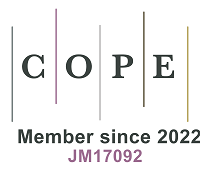REFERENCES
1. Dodge LE, Choi JW, Kelley KE, Herńandez-D Iaz S, Hauser R. Medications as a potential source of exposure to parabens in the United States population. Environ Res 2018;164:580-4.
2. Halden RU, Paull DH. Co-occurrence of triclocarban and triclosan in United States water resources. Environ Sci Technol 2005;39:1420-6.
3. Chen D, Kannan K, Tan H, et al. Bisphenol Analogues other than BPA: Environmental occurrence, human exposure, and toxicity-a review. Environ Sci Technol 2016;50:5438-53.
4. Malkoske T, Tang Y, Xu W, Yu S, Wang H. A review of the environmental distribution, fate, and control of tetrabromobisphenol A released from sources. Sci Total Environ 2016;569-570:1608-17.
5. González-toledo E, Compañó R, Granados M, Dolors Prat M. Detection techniques in speciation analysis of organotin compounds by liquid chromatography. Trend Anal Chem 2003;22:26-33.
6. Liao C, Kannan K. A survey of alkylphenols, bisphenols, and triclosan in personal care products from China and the United States. Arch Environ Contam Toxicol 2014;67:50-9.
7. Huang H, Du G, Zhang W, et al. The
8. Jung EM, An BS, Choi KC, Jeung EB. Potential estrogenic activity of triclosan in the uterus of immature rats and rat pituitary GH3 cells. Toxicol Lett 2012;208:142-8.
9. Dann AB, Hontela A. Triclosan: environmental exposure, toxicity and mechanisms of action. J Appl Toxicol 2011;31:285-311.
10. Halden RU, Lindeman AE, Aiello AE, et al. The florence statement on triclosan and triclocarban. Environ Health Perspect 2017;125:064501.
11. Giulivo M, Lopez de Alda M, Capri E, Barceló D. Human exposure to endocrine disrupting compounds: Their role in reproductive systems, metabolic syndrome and breast cancer. A review. Environ Res 2016;151:251-64.
12. Wang W, Kannan K. Fate of parabens and their metabolites in two wastewater treatment plants in New York State, United States. Environ Sci Technol 2016;50:1174-81.
13. Zhang L, Dong L, Ding S, et al. Effects of n-butylparaben on steroidogenesis and spermatogenesis through changed E₂ levels in male rat offspring. Environ Toxicol Pharmacol 2014;37:705-17.
14. SCCS. Clarification on Opinion SCCS/1348/10 in the light of the Danish clause of safeguard banning the use of parabens in cosmetic products intended for children under three years of age. Scientific Committee on Consumer Safety (SCCS) 2011. Available from: http://ec.europa.eu/health/scientific_committees/consumer_safety/docs/sccs_o_069.pdf [Last accessed on 23 Feb 2023].
15. Błędzka D, Gromadzińska J, Wąsowicz W. Parabens. From environmental studies to human health. Environ Int 2014;67:27-42.
16. Official Journal of the European Union. Regulation (EC) no 1223/2009 of the European Parliament and of the Council of 30 November 2009 on cosmetic products. 2009;L342:59-209. Available from: https://eur-lex.europa.eu/legal-content/en/ALL/?uri=CELEX:32009R1223 [Last accessed on 23 Feb 2023].
17. Seachrist DD, Bonk KW, Ho SM, Prins GS, Soto AM, Keri RA. A review of the carcinogenic potential of bisphenol A. Reprod Toxicol 2016;59:167-82.
18. Xu W. The development status and trend of BPA industry. Chem Ind 2021; 39: 28-36 (in Chinese). Available from: https://kns.cnki.net/kcms/detail/detail.aspx?dbcode=CJFD&dbname=CJFDLAST2022&filename=HGJJ202104004&uniplatform=NZKPT&v=OW_FTZdJ5fONUa2p6DLw0Z-dhLdSwkioqnFyylFj4OF8666BBnTdwVl0bbt4EEyj [Last accessed on 23 Feb 2023].
19. The European Commission. Commission directive 2011/8/EU of 28 January 2011 amending directive 2002/72/EC as regards the restriction of use of bisphenol A in plastic infant feeding bottles. Off J Eur Union 10-05-2013 2011. Available from: https://eur-lex.europa.eu/LexUriServ/LexUriServ.do?uri=OJ:L:2011:026:0011:0014:EN:PDF [Last accessed on 23 Feb 2023].
20. Government of Canada. Order amending schedule I to the hazardous products act (Bisphenol A), Part II, 144,7. Government of Canada. 2010. Available from: https://publications.gc.ca/gazette/archives/p2/2010/2010-03-31/pdf/g2-14407.pdf [Last accessed on 23 Feb 2023].
21. Rochester JR, Bolden AL. Bisphenol S and F: a systematic review and comparison of the hormonal activity of bisphenol A substitutes. Environ Health Perspect 2015;123:643-50.
22. Ding K, Zhang H, Wang H, et al. Atomic-scale investigation of the interactions between tetrabromobisphenol A, tetrabromobisphenol S and bovine trypsin by spectroscopies and molecular dynamics simulations. J Hazard Mater 2015;299:486-94.
23. Liu K, Li J, Yan S, Zhang W, Li Y, Han D. A review of status of tetrabromobisphenol A (TBBPA) in China. Chemosphere 2016;148:8-20.
24. Lyche JL, Rosseland C, Berge G, Polder A. Human health risk associated with brominated flame-retardants (BFRs). Environ Int 2015;74:170-80.
25. Yang R, Liu S, Liang X, et al. TBBPA, TBBPS, and TCBPA disrupt hESC hepatic differentiation and promote the proliferation of differentiated cells partly via up-regulation of the FGF10 signaling pathway. J Hazard Mater 2021;401:123341.
26. Net S, Sempéré R, Delmont A, Paluselli A, Ouddane B. Occurrence, fate, behavior and ecotoxicological state of phthalates in different environmental matrices. Environ Sci Technol 2015;49:4019-35.
27. Specht IO, Toft G, Hougaard KS, et al. Associations between serum phthalates and biomarkers of reproductive function in 589 adult men. Environ Int 2014;66:146-56.
28. USEPA. Toxic and priority pollutants under the clean water act. Available from: https://www.epa.gov/eg/toxic-and-priority-pollutants-under-clean-water-act [Last accessed on 23 Feb 2023].
29. Lan J, Shen Z, Gao W, Liu A. Occurrence of bisphenol-A and its brominated derivatives in tributary and estuary of Xiaoqing River adjacent to Bohai Sea, China. Mar Pollut Bull 2019;149:110551.
30. Huang DY, Zhao HQ, Liu CP, Sun CX. Characteristics, sources, and transport of tetrabromobisphenol A and bisphenol A in soils from a typical e-waste recycling area in South China. Environ Sci Pollut Res Int 2014;21:5818-26.
31. Huang D, Gao L, Qiao L, et al. Concentrations of and risks posed by short-chain and medium-chain chlorinated paraffins in soil at a chemical industrial park on the southeast coast of China. Environ Pollut 2020;258:113704.
32. Zhu Q, Xu L, Wang W, Liu W, Liao C, Jiang G. Occurrence, spatial distribution and ecological risk assessment of phthalate esters in water, soil and sediment from Yangtze River Delta, China. Sci Total Environ 2022;806:150966.
33. Zhu Q, Wang M, Jia J, Hu Y, Wang X, Liao C, Jiang G. Occurrence, distribution, and human exposure of several endocrine-disrupting chemicals in indoor dust: a nationwide study. Environ Sci Technol 2020;54:11333-43.
34. Zhu Q, Jia J, Wang Y, et al. Spatial distribution of parabens, triclocarban, triclosan, bisphenols, and tetrabromobisphenol A and its alternatives in municipal sewage sludges in China. Sci Total Environ 2019;679:61-9.
35. Zhu Q, Jia J, Zhang K, Zhang H, Liao C, Jiang G. Phthalate esters in indoor dust from several regions, China and their implications for human exposure. Sci Total Environ 2019;652:1187-94.
36. Dong J, Wang NN, Yao ZJ, et al. ADMETlab: a platform for systematic ADMET evaluation based on a comprehensively collected ADMET database. J Cheminform 2018;10:29.
37. Wang J, Chen G, Christie P, Zhang M, Luo Y, Teng Y. Occurrence and risk assessment of phthalate esters (PAEs) in vegetables and soils of suburban plastic film greenhouses. Sci Total Environ 2015;523:129-37.
38. USEPA. Supplemental guidance for developing soil screening level for superfund sites. OSWER 9355.4-24. Office of Solid Waste and Emergency Response, Washington. 2001. Available from: https://epa-sdcc.ornl.gov/pdfs/SSG_nonrad_supplemental.pdf [Last accessed on 23 Feb 2023].
39. Tao H, Wang Y, Liang H, Zhang X, Liu X, Li J. Pollution characteristics of phthalate acid esters in agricultural soil of Yinchuan, northwest China, and health risk assessment. Environ Geochem Health 2020;42:4313-26.
40. Xie J, Zhao N, Zhang Y, Hu H, Zhao M, Jin H. Occurrence and partitioning of bisphenol analogues, triclocarban, and triclosan in seawater and sediment from East China Sea. Chemosphere 2022;287:132218.
41. Lozano N, Rice CP, Ramirez M, Torrents A. Fate of Triclocarban, Triclosan and Methyltriclosan during wastewater and biosolids treatment processes. Water Res 2013;47:4519-27.
42. Soni MG, Carabin IG, Burdock GA. Safety assessment of esters of p-hydroxybenzoic acid (parabens). Food Chem Toxicol 2005;43:985-1015.
43. Song S, Song M, Zeng L, et al. Occurrence and profiles of bisphenol analogues in municipal sewage sludge in China. Environ Pollut 2014;186:14-9.
44. Zhang ZM, Yang GP, Zhang HH, Shi XZ, Zou YW, Zhang J. Phthalic acid esters in the sea-surface microlayer, seawater and sediments of the East China Sea: spatiotemporal variation and ecological risk assessment. Environ Pollut 2020;259:113802.
45. Wang MH, Chen CF, Albarico FPJB, Chen CW, Dong CD. Occurrence and distribution of phthalate esters and microplastics in wastewater treatment plants in Taiwan and their toxicological risks. Chemosphere 2022;307:135857.
46. Azzouz A, Ballesteros E. Combined microwave-assisted extraction and continuous solid-phase extraction prior to gas chromatography-mass spectrometry determination of pharmaceuticals, personal care products and hormones in soils, sediments and sludge. Sci Total Environ 2012;419:208-15.
47. Cha J, Cupples AM. Determination of triclocarban and triclosan in biosolid and soil samples by application of pressurized liquid extraction and liquid chromatography with tandem mass spectrometry. Geosystem Engineering 2012;15:280-91.
48. Chen J, Meng XZ, Bergman A, Halden RU. Nationwide reconnaissance of five parabens, triclosan, triclocarban and its transformation products in sewage sludge from China. J Hazard Mater 2019;365:502-10.
49. Mao H, Li H, Li Y, Li L, Yin L, Yang Z. Four typical personal care products in a municipal wastewater treatment plant in China: Occurrence, removal efficiency, mass loading and emission. Ecotoxicol Environ Saf 2020;188:109818.
50. Pérez RA, Albero B, Miguel E, Sánchez-Brunete C. Determination of parabens and endocrine-disrupting alkylphenols in soil by gas chromatography-mass spectrometry following matrix solid-phase dispersion or in-column microwave-assisted extraction: a comparative study. Anal Bioanal Chem 2012;402:2347-57.
51. Feng J, Zhao J, Xi N, Guo W, Sun J. Parabens and their metabolite in surface water and sediment from the Yellow River and the Huai River in Henan Province: Spatial distribution, seasonal variation and risk assessment. Ecotoxicol Environ Saf 2019;172:480-7.
52. Liao C, Shi J, Wang X, Zhu Q, Kannan K. Occurrence and distribution of parabens and bisphenols in sediment from northern Chinese coastal areas. Environ Pollut 2019;253:759-67.
53. Sun X, Peng J, Wang M, et al. Determination of nine bisphenols in sewage and sludge using dummy molecularly imprinted solid-phase extraction coupled with liquid chromatography tandem mass spectrometry. J Chromatogr A 2018;1552:10-6.
54. Wang J, Liu L, Wang J, et al. Distribution of metals and brominated flame retardants (BFRs) in sediments, soils and plants from an informal e-waste dismantling site, South China. Environ Sci Pollut Res Int 2015;22:1020-33.
55. Tang J, Feng J, Li X, Li G. Levels of flame retardants HBCD, TBBPA and TBC in surface soils from an industrialized region of East China. Environ Sci Process Impacts 2014;16:1015-21.
56. Lu JF, He MJ, Yang ZH, Wei SQ. Occurrence of tetrabromobisphenol a (TBBPA) and hexabromocyclododecane (HBCD) in soil and road dust in Chongqing, western China, with emphasis on diastereoisomer profiles, particle size distribution, and human exposure. Environ Pollut 2018;242:219-28.
57. Jeon JW, Kim CS, Kim HJ, Lee CH, Hwang SM, Choi SD. Spatial distribution, source identification, and anthropogenic effects of brominated flame retardants in nationwide soil collected from South Korea. Environ Pollut 2021;272:116026.
58. Li F, Jin J, Tan D, et al. Hexabromocyclododecane and tetrabromobisphenol A in sediments and paddy soils from Liaohe River Basin, China: levels, distribution and mass inventory. J Environ Sci (China) 2016;48:209-17.
59. Gorga M, Martínez E, Ginebreda A, Eljarrat E, Barceló D. Determination of PBDEs, HBB, PBEB, DBDPE, HBCD, TBBPA and related compounds in sewage sludge from Catalonia (Spain). Sci Total Environ 2013;444:51-9.
60. Ma TT, Wu LH, Chen L, Zhang HB, Teng Y, Luo YM. Phthalate esters contamination in soils and vegetables of plastic film greenhouses of suburb Nanjing, China and the potential human health risk. Environ Sci Pollut Res Int 2015;22:12018-28.
61. Sun J, Pan L, Zhan Y, et al. Contamination of phthalate esters, organochlorine pesticides and polybrominated diphenyl ethers in agricultural soils from the Yangtze River Delta of China. Sci Total Environ 2016;544:670-6.
62. Wang LY, Gu YY, Zhang ZM, et al. Contaminant occurrence, mobility and ecological risk assessment of phthalate esters in the sediment-water system of the Hangzhou Bay. Sci Total Environ 2021;770:144705.
63. Zhu Q, Jia J, Zhang K, Zhang H, Liao C. Spatial distribution and mass loading of phthalate esters in wastewater treatment plants in China: An assessment of human exposure. Sci Total Environ 2019;656:862-9.
64. Geens T, Aerts D, Berthot C, et al. A review of dietary and non-dietary exposure to bisphenol-A. Food Chem Toxicol 2012;50:3725-40.
65. Liao C, Chen L, Kannan K. Occurrence of parabens in foodstuffs from China and its implications for human dietary exposure. Environ Int 2013;57-58:68-74.
66. Liao C, Chen L, Kannan K. Occurrence of parabens in foodstuffs from China and its implications for human dietary exposure. Environ Int 2013;57-58:68-74.
67. Silano V, Bolognesi C, Castle L, et al. Panel on Food Contact Materials; Enzymes; Flavourings and Processing Aids (CEF). A statement on the developmental immunotoxicity of bisphenol A (BPA): answer to the question from the Dutch Ministry of Health, Welfare and Sport. EFSA J 2016;14:e04580.
68. Fitzgerald R, Loveren HV, Civitella C, Castoldi AF, Bernasconi G. European Food Safety Authority (EFSA). Assessment of new information on Bisphenol S (BPS) submitted in response to the Decision 1 under REACH Regulation (EC) No 1907/2006. EFS3 2020:17.
69. Higashihara N, Shiraishi K, Miyata K, Oshima Y, Minobe Y, Yamasaki K. Subacute oral toxicity study of bisphenol F based on the draft protocol for the “Enhanced OECD Test Guideline no. 407”. Arch Toxicol 2007;81:825-32.
70. Wikoff D, Thompson C, Perry C, et al. Development of toxicity values and exposure estimates for tetrabromobisphenol A: application in a margin of exposure assessment. J Appl Toxicol 2015;35:1292-308.
71. Li X, Zhong Y, He W, et al. Co-exposure and health risks of parabens, bisphenols, triclosan, phthalate metabolites and hydroxyl polycyclic aromatic hydrocarbons based on simultaneous detection in urine samples from guangzhou, south China. Environ Pollut 2021;272:115990.







